Last Supper paintings are among the most popular theme in Christian art. Very few artists got into serious trouble, though, because of their depiction of Christ and his companions.
This was, unfortunately, the case with “The Feast in the House of Levi” by Paolo Veronese (1528-1588), a monumental painting such as most of the works in the artist’s oeuvre.
1. It was commissioned to decorate the wall of a refectory in Venice
The Feast in the House of Levi is one of many monumental paintings created by Mannerist artist Paolo Veronese, one of the leading artists of the Venetian School.
Originally born in the city of Verona, which is where his name comes from, he moved to Venice in 1553 and started attracting commissions fairly quickly. His style is defined by the exuberant use of color and an incredible number of figures.
This particular painting was commissioned in the early 1570s as a Last Supper painting similar to Leonardo da Vinci’s world-famous work with the same subject in Milan.
It was completed in 1573 and was intended to decorate the wall of a refectory at the Basilica di Santi Giovanni e Paolo. This 15th-century church is locally known as the “San Zanipolo.”
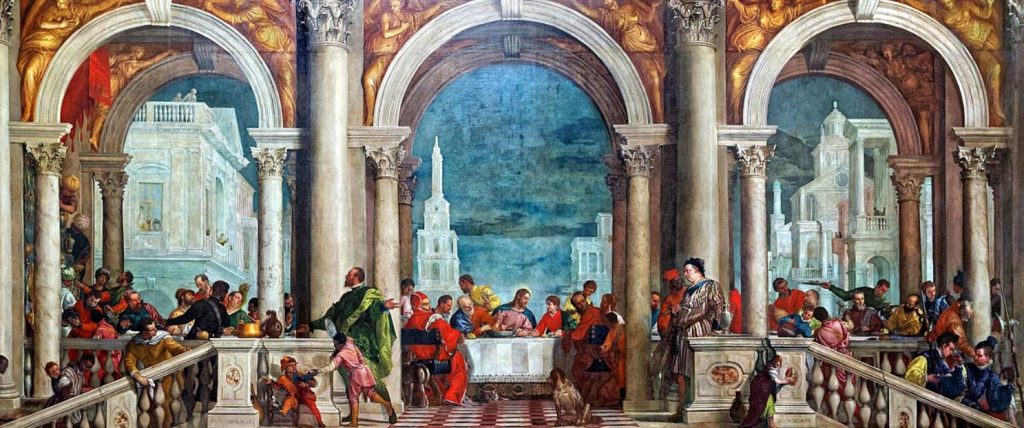
2. It was supposed to replace an earlier painting that was destroyed by fire
The 3 great masters of the 16th-century Venetian School were Veronese, Titian, and Tintoretto. Even though Veronese is considered to be the least of the 3 by modern art historians, he was greatly appreciated as an artist in his lifetime.
This also means that he often got commissions in favor of Tintoretto, who was about a decade older than him.
In the case of this painting, it was intended to replace an earlier Last Supper painting created by Titian. This painting is lost today as it was destroyed by fire in 1571.

3. It’s one of the largest canvases created in the 16th century
Veronese didn’t hold back when he created monumental paintings. He added as many figures as possible and his work had immense dimensions.
A work created about a decade earlier known as “The Wedding At Cana” is a prime example of that as it measures 6.77 × 9.94 meters (267 × 391 inches).
The Feast in the House of Levi is even bigger as it has dimensions of 5.6 × 13.09 centimeters (18.37 × 42.95 feet), an incredible work of art that is considered to be one of the biggest oil on canvas paintings of the 16th century.
It’s not the biggest though, because this honor is reserved for a work known as “Il Paradiso” in the Doge’s Palace in Venice by Tintoretto. This was one of his final works, created in the year 1592, which measures 22 x 7 meters (72.17 x 22.96 feet).
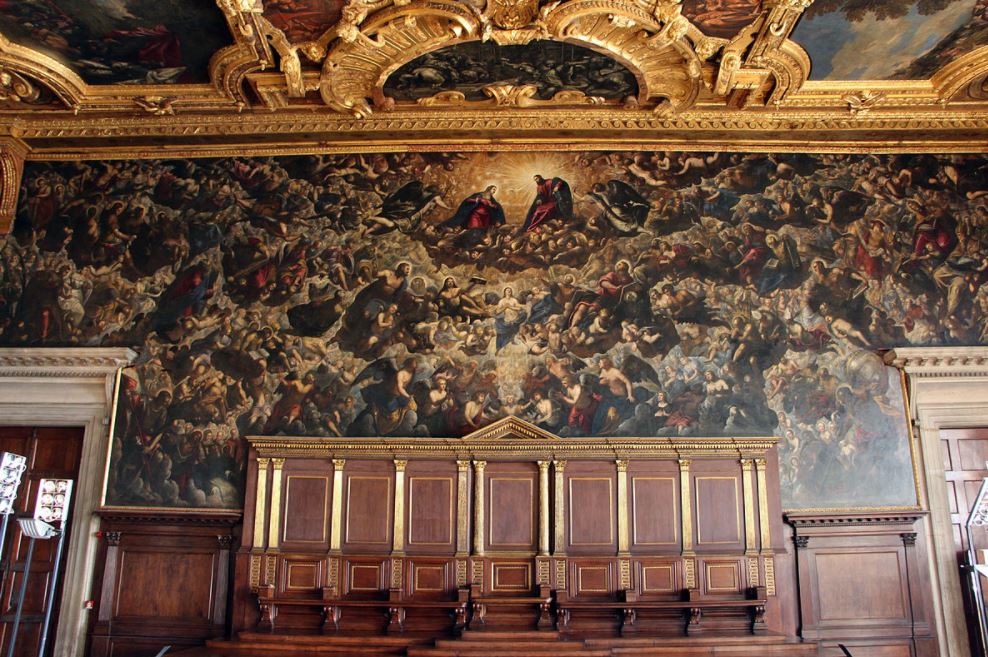
4. Veronese was summoned by the Holy Tribunal because of the content
Just like with his other paintings, Veronese included numerous figures into a painting that was supposed to be his version of the Last Supper. The event captured by the artist depicts the moment Christ tells his apostles that he is about to b betrayed.
The event takes place in a typical palace-like setting featuring elaborate Roman architecture. It also includes a wide variety of figures apart from Jesus Christ and the 12 apostles, including jesters, German drunkards, and even animals.
This was clearly a case of the artist taking things a step too far, something that didn’t go too well with the local religious authorities at the time. After all, the Council of Trent to halt the Protestant movement within the Catholic church had only been completed a decade earlier in 1563.
Veronese was summoned by the Holy Tribunal and the accusation of heresy was tossed around, one of the gravest offenses at the time. He was given 3 months to rectify his mistakes.
Instead of repainting parts of the work, he simply changed the title to something that didn’t offend the religious moral police and things were just fine afterward.

5. The painting is on public display in a popular museum in Venice
So where can you admire this incredible work of art?
The painting never left Venice as it’s still on public display in one of the city’s most popular art museums known as the Gallerie dell’Accademia. The museum is housed in a building called the “Scuola della Carità” located on the south bank of the city’s Grand Canal.
It’s in good company because this museum has a wide variety of Renaissance and Mannerist paintings on display, including works of Titian, Tintoretto, Giorgione, and Bellini.
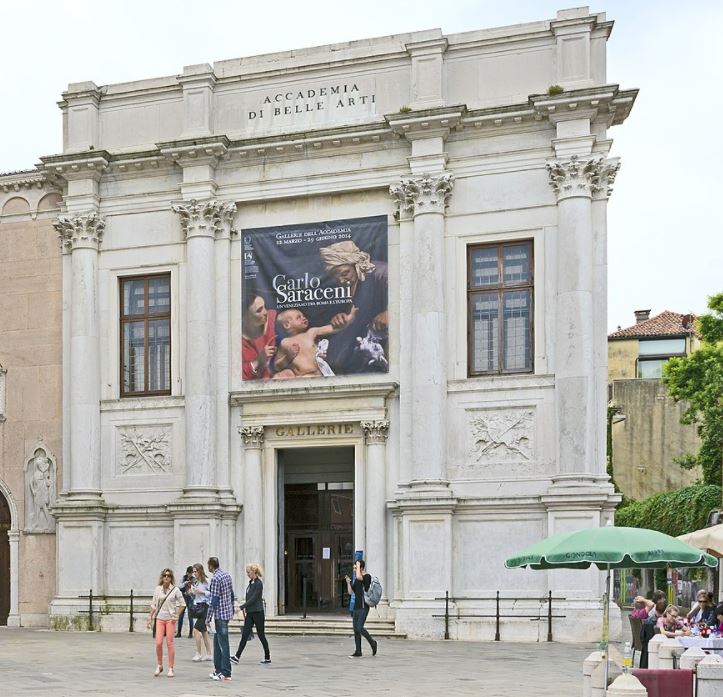
More interesting facts about The Feast in the House of Levi
6. Veronese inscribed the reference to Luke, chapter 5, clearly stating that it depicts a banquet scene in the House of Levi to which Jesus Christ was invited.
Christ is the focal point of the work, but Veronese had included a dog and a cat into this central point of the work as well, something that didn’t go too well with the Holy Tribunal at the time.
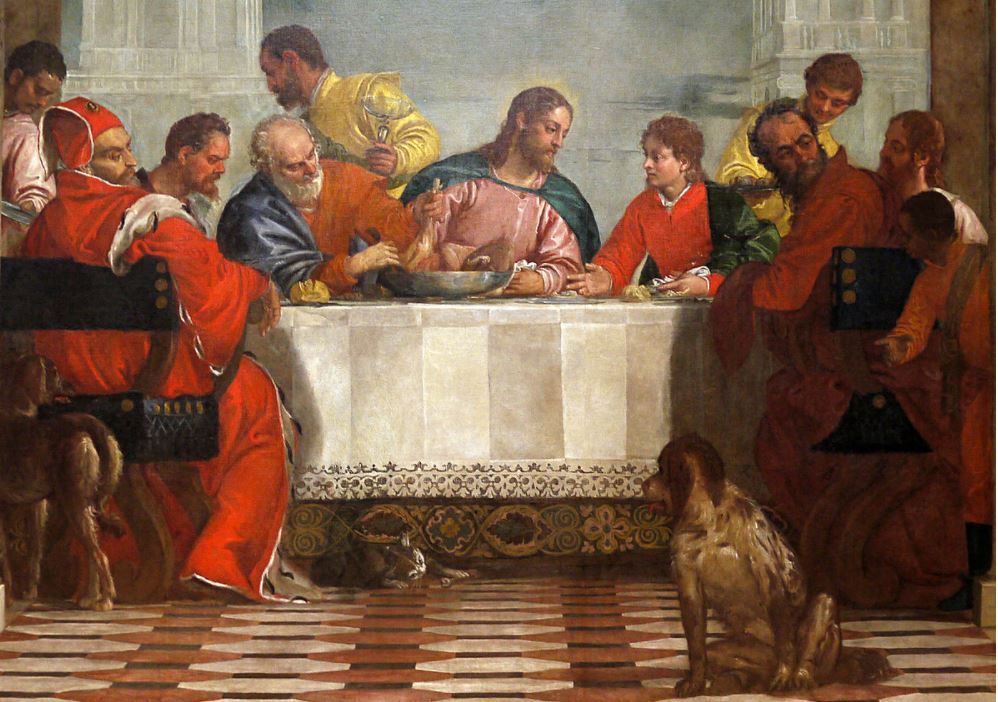
7. This is the reference to the Gospel of Saint Luke, Chapter 5, that Veronese referred to with the inscription:
“And Levi made him a great feast in his own house: and there was a great company of publicans and of others that sat down with them. But their scribes and Pharisees murmured against his disciples, saying, ‘Why do ye eat and drink with publicans and sinners?’ And Jesus answering said unto them, ‘They that are whole need, not a physician; but they that are sick. I came not to call the righteous, but sinners to repentance.”
The main reason why he changed the title about this banquet of Jesus Christ at the House of Levi is that it makes a clear statement about sinners. This justified the hordes of German drunkards and other sinners that the church deemed inappropriate initially.
8. Veronese didn’t use linear perspective in this painting because of the sheer size of the work. Instead, he relied on spatial arrangements of all elements to enhance the work’s overall composition. This is emphasized by the staircases that lead up to the central point of the painting.
The argument that Veronese made to justify his inclusion of various types of inappropriate figures was that he didn’t include them in the same line as Jesus Christ. Obviously, this justification wasn’t accepted.
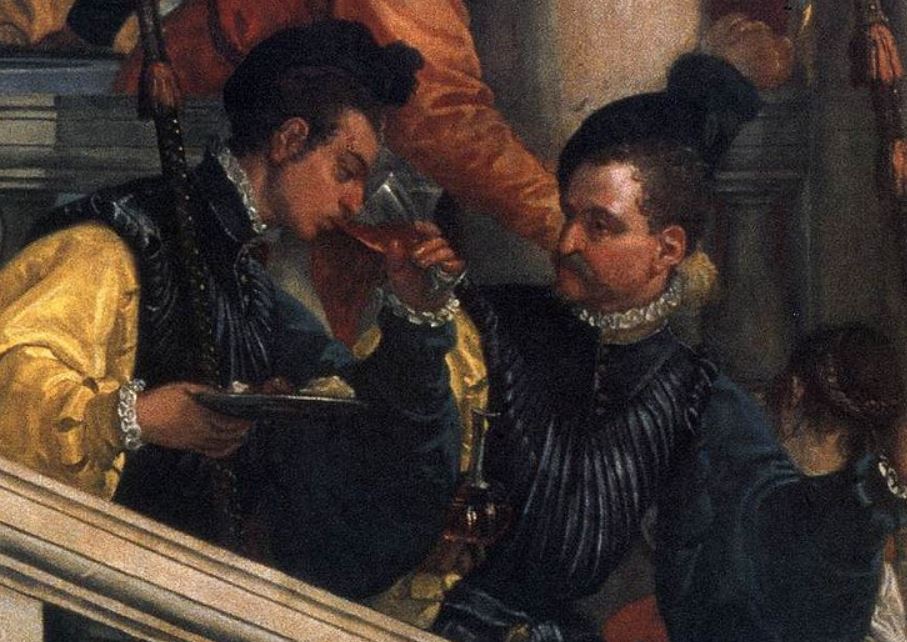
9. The main reason why Veronese included a large number of inappropriate figures is because he wasn’t given any specifications as to what to include. The artist was able to let his creativity run loose, so to speak.
This was quite normal in the Renaissance period and was even mentioned in a painting treatise created in 1435 by Leon Battista Alberti. This also meant that the artist was put on trial instead of the patron, which was the case here.
10. Even though this drawing is rarely on public display, the museum in which Veronese’s painting is housed also owns “The Vitruvian Man,” one of the most famous drawings created by Leonardo da Vinci.
The museum was founded in the year 1750 and is a must-visit attraction if you enjoy fine art in case you plan to travel to Venice, that’s for sure.



